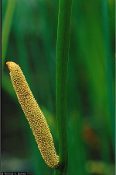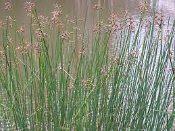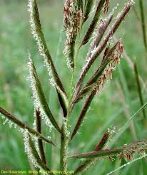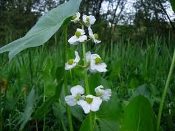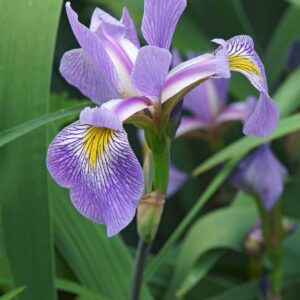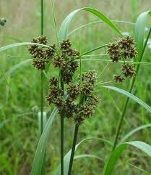$7.50
Acorus americanus, American Sweet Flag, Native Perennial Plugs, Native Wetland Plant Plugs
Wholesale pricing is based on quantity. 50 plants (plugs) per tray with a required minimum purchase of 5 plants per species.
5 or more $7.50 each
25 or more $3.50 each
50 or more $1.65each
300 or more $ 1.50 each
500 or more Call
For Shipping, Planting and additional FAQ’s please see “About our organically grown native plug trays “.
Native Oak Trees are dug and shipped while dormant, late November to early spring.
See all available Native Perennial Grasses & Organically Grown Plug Trays
Order Minimum
There is a minimum order total of $150.00.
before tax (VA residents only) and shipping.
There are NO EXCEPTIONS.
Description
Acorus americanus, American Sweet Flag, Native Perennial Plugs, Native Wetland Plant Plugs
Botanic Name (s): acorus americanus
Common Name(s): American Sweet Flag
Mature height :’3ft
Mature spread:3ft
Flower Color/ Bloom Time : Blue/Spring
Fall Color:yellow
Sun Exposure: full-part sun
Soil moisture: wet/moist
Soil Ph:
Soil Type:
Loamy Soil- y
Sandy soil, c
Native Habitat:
Notes:
Erosion Control Four Season Interest
Average Wildlife Value: Songbirds Small Mammals
FACUpl- Occur in wetlands and non-wetlands
Native To Mountain Regions
Native to Piedmont Regions
Native to Coastal regions
Acorus americanus, American Sweet Flag, Native Perennial Plugs, Native Wetland Plant Plugs
American use of several-veined sweetflag probably played a role in determining its distribution, as the plant was highly prized for its medicinal properties, widely traded, and wild-planted along trade routes. Disjunct populations now occur at sites that are close to old American villages. The contains the medicinal properties and is used to treat a variety of conditions from nausea, heartburn, and colds to fatigue and anxiety.
Sweet Flay, Acorus calamus, is a deciduous, spreading, marginal aquatic perennial that features iris-like, sword-shaped leaf blades typically growing in basal clumps to 30 inches tall. Although native to Europe, it was introduced into North America by settlers in the 1600s, and has naturalized over time throughout much of the United States.
Mature leaves have one slightly wavy edge and a prominent midrib. Plants thrive in wet, boggy soils and are commonly grown today as foliage accents in water gardens and pond margins. Insignificant tiny greenish flowers appear in elongated inflorescences which appear in late spring. Flowers may give way to tiny fleshy berries. Foliage and rhizomes are sweetly fragrant when bruised, hence the common name.
Habitats include sedge meadows that are prone to flooding, edges of small lakes and ponds, marshes, swamps, seeps and springs, and wetland restorations. Even though this is an introduced plant, it has been found in both high quality and degraded wetlands.
Easily grown in average, medium to wet soils in full sun to part shade. Grows well in both boggy conditions and consistently moist garden soils. In water gardens, plant rhizomes slightly below the soil surface in moist soils at the water’s edge or in containers set in shallow water. Rhizomes or existing clumps may also be planted in containers sunk into wet boggy areas to help prevent any possible invasive spread. Slowly naturalizes by creeping rhizomes and can form large colonies in the wild.
